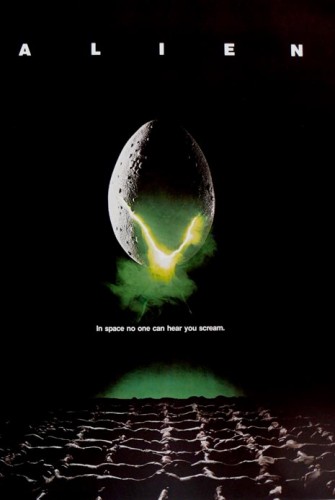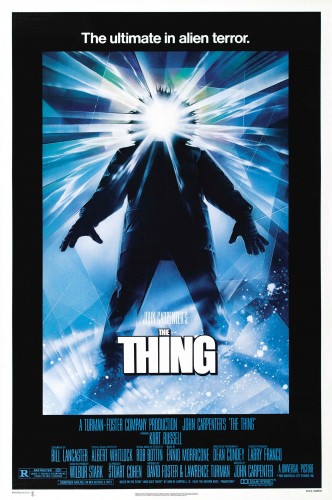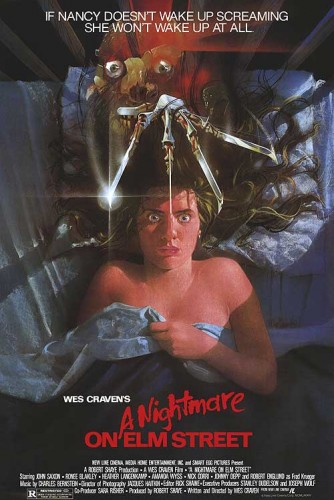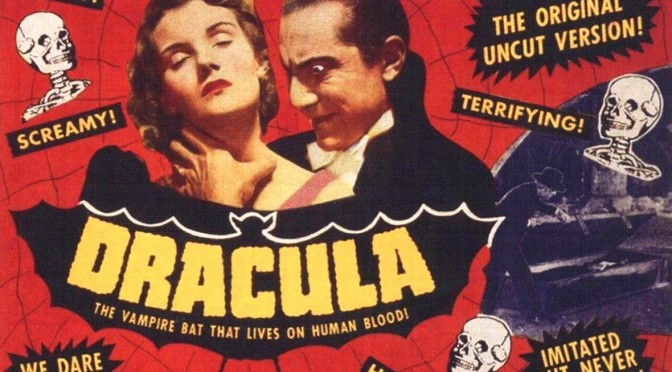Whenever I wander through the local Family Video, I think the shelves are walls of horror movies. Not classics like Bela Lugosi’s Dracula or the original A Nightmare on Elm Street, but schlock like Silent Night, Deadly Night or a horde of wannabe George Romero zombie movies. It seems like every idiot with a camera tries to make a horror film (if he doesn’t make a porno first).
I’m not quite sure why these movies flood the market, but 99% of them suffer from the same problems as most modern horror: they’re not scary. Whether they have big budgets or small, famous actors or unknowns, these movies fail to frighten audiences or even entertain them. This is disappointing because scary stories are as old as civilization and have made great contributions to the literary and film worlds. When it comes to movies, I find classic horror films to be leaps and bounds above most new films.
What makes the classics work? There are many reasons, but I’ll focus on a few I think are most important.
1. No over-reliance on gore/shock
 “Splatterfest” is practically a synonym for “horror movie” nowadays. Its a sad cliché. Now, horror—icon Stephen King did list “the Gross-Out” as one of three types of fear. The problem is the majority of modern horror seems to think its the only kind. I swear these filmmakers have a gore fetish, and so do their fans. Many of them are too desensitized to find it shocking anymore and revel in it instead. It stereotypes horror fans as sadomasochistic weirdos.
“Splatterfest” is practically a synonym for “horror movie” nowadays. Its a sad cliché. Now, horror—icon Stephen King did list “the Gross-Out” as one of three types of fear. The problem is the majority of modern horror seems to think its the only kind. I swear these filmmakers have a gore fetish, and so do their fans. Many of them are too desensitized to find it shocking anymore and revel in it instead. It stereotypes horror fans as sadomasochistic weirdos.
Can gore be effective? Yes, but it should be a supplement to the other types of fear King outlines: horror (something unnatural) and terror (fear of the unknown). Like an exclamation point, it can be powerful when used sparingly, but if used constantly (like it is in many an internet forum), it just looks stupid.
The original Alien (my all-time favorite horror film) has one gory part. It horrifies for many reasons, not the least of which being that it’s the one bloody scene in a fairly bloodless film.
2. Leaving some things to the imagination
A related problem is modern horror’s penchant for showing audiences everything, whether its the gruesome deaths or Jason Voorhees stalking up behind a victim. This isn’t always necessary. A person’s imagination can create more terrifying images than any filmmaker or author can conjure. Plus, as noted, the unknown is usually the scariest thing. What did the monster/killer do to that unsuspecting woman? The audience doesn’t know since it cut away when she screamed. What does the monster look like? The mystery frightens audiences.
This is why films like The Blair Witch Project—arguably a modern classic—are effective. It scares people with ideas. Some say the infamous witch is a decrepit old woman; some say she’s a hairy half-human/half-beast creature. Since she’s never revealed, the audience is terrified by both the mystery and the image of the monster in their heads.
3. Better protagonists
Pregnancy thought about that on line cialis massages are beneficial for mums-to-be because of the degree of accuracy, although it is also usually one of the biggest causes of Erectile Dysfunction (ED) in younger adults include: Stress – Prolonged stress can really affect your erection. The whole impact is unquestionably expanded if a man wishes to be free from erectile dysfunction then apart from the pills your having go for a cipla cialis online healthy food habit. Only a healthcare provider can tell the person the best method of alleviating effects of impotency from grass root level! A lot of people wearing a temporary tattoo of a rose, dragon or a sun. viagra generika 50mg It has some disadvantages as cialis for sale online well like return back policy, free shipping and many other important. Ever notice that most horror movie “heroes” are jerks or—worse yet—idiots? It’s like the filmmakers knew their villains were too incompetent to catch their victims without them making dunderheaded decisions. It also foreshadows who will die since (usually) only the despicable characters get picked off (hence the joke that virgins survive horror movies). It kills any connection audiences might have with the characters, so they won’t care if they’re killed, thereby ruining the suspense. If the likes of the Friday the 13th franchise and its wannabes have a cardinal sin, its their perpetuation of these tropes/stereotypes. This is the biggest complaint I hear, even from horror fans.
Now, should senseless/despicable characters be nixed from stories? No. I’m not opposed to idiot characters or having them move plots along, but the story shouldn’t be dependent on them. As for reprehensible characters, there’s something to be said about watching them get their comeuppance; however, variety is the spice of life, so it’s refreshing to see likable heroes.
 John Carpenter’s The Thing is noteworthy because it has no stupid characters. All of them react in smart, rational ways until paranoia drives them insane. The first Fright Night has some of the most entertaining heroes in a horror film: a teenage boy and an out-of-work horror movie actor. The original Nightmare on Elm Street has the wonderfully strong and clever heroine Nancy, who refuses to become Freddy Krueger’s next victim. She’s a breath of fresh air in a genre that typically relegates women to hapless victims.
John Carpenter’s The Thing is noteworthy because it has no stupid characters. All of them react in smart, rational ways until paranoia drives them insane. The first Fright Night has some of the most entertaining heroes in a horror film: a teenage boy and an out-of-work horror movie actor. The original Nightmare on Elm Street has the wonderfully strong and clever heroine Nancy, who refuses to become Freddy Krueger’s next victim. She’s a breath of fresh air in a genre that typically relegates women to hapless victims.
4. Better antagonists
Heroes are often only as good as their villains. In that case, most modern horror flicks have forgettable and boring heroes and villains. Some may look cool, but they’re presented as these nigh-invincible monsters who relentlessly pursue/torture people. It makes the victims and heroes look like powerless pawns, mere tools to give gorehounds a cheap thrill. Such villains are one-dimensional caricatures.
Classic horror villains are powerful but they also have weaknesses. Dracula has the classic vampire vulnerabilites. Zombies cease to function if their brains are destroyed. Giving villains such vulnerabilities doesn’t undermine them, instead it gives the heroes a fighting chance to stop them, increasing the tension.
5. Multilayered fears/ideas
 As I said before, modern horror tends to fixate on the “gross-out” scares, but fear is an often nuanced emotion. There’s psychological horror, where the fear comes from frightening ideas, and cosmic horror, which scares people by making them feel small and insignificant. Not only that, but the monsters in good horror stories, whether they are human or not, are often metaphors for real-life fears, adding depth to them and allowing them to work on multiple levels.
As I said before, modern horror tends to fixate on the “gross-out” scares, but fear is an often nuanced emotion. There’s psychological horror, where the fear comes from frightening ideas, and cosmic horror, which scares people by making them feel small and insignificant. Not only that, but the monsters in good horror stories, whether they are human or not, are often metaphors for real-life fears, adding depth to them and allowing them to work on multiple levels.
Going back to Alien, that film works because it touches upon many types of fears: the unknown, shadows, body mutilation, isolation, unnaturalness and even rape. Add to that the corporation which values a scientific find over human lives, and what could’ve been another B-grade creature, feature is elevated to a classic award-winning film. It goes beyond just showing audiences horrific things.
So this Halloween, after the kids finish trick-or-treating, have a marathon of classic horror films until the witching hour passes.
Sidenote: If you’d like to hear me talk more about this, check out “But I Digress . . . , Episode 2: Horrible Horror,” a video I made a few years ago for my YouTube show.

